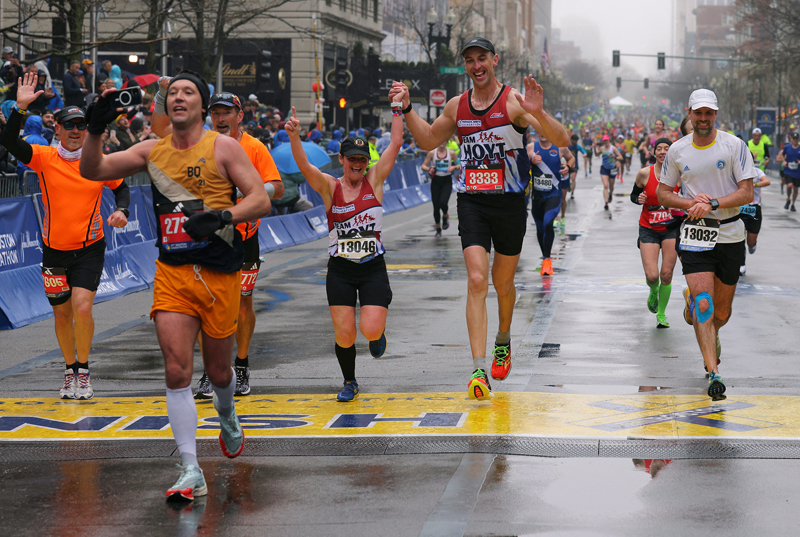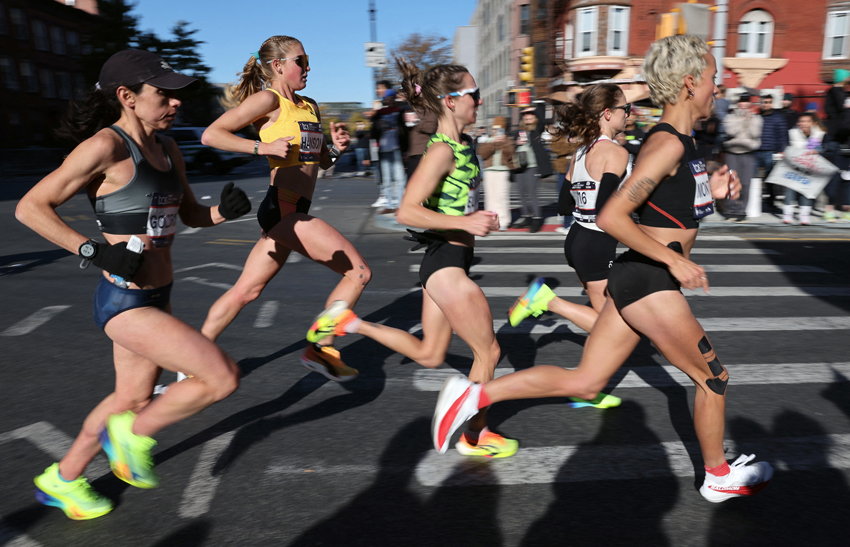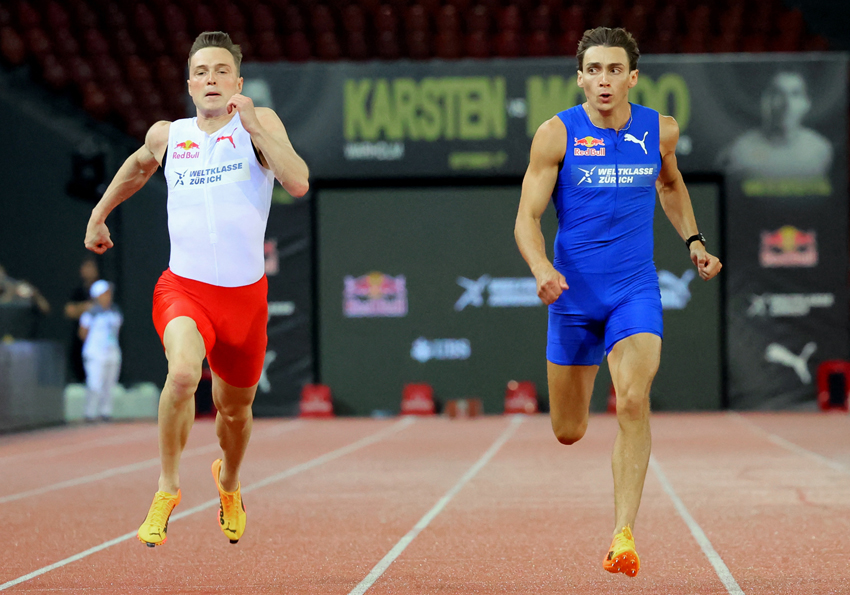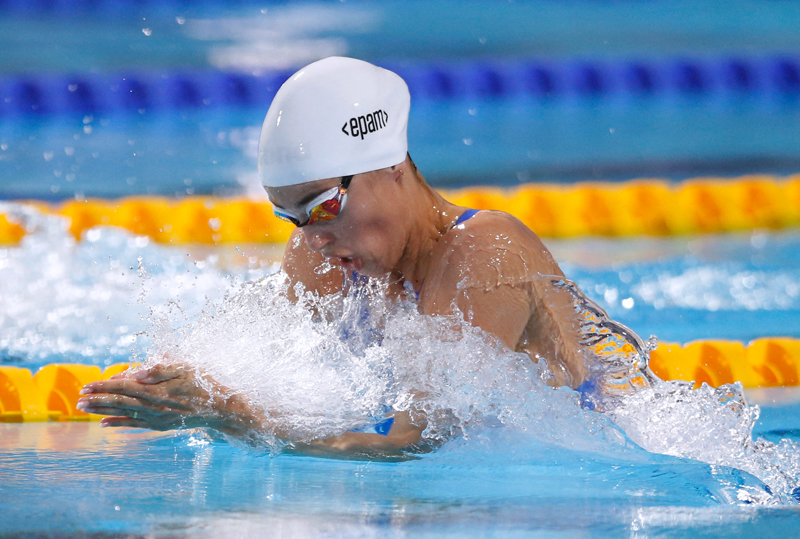Marathon performance: why training intensity balance matters

When it comes to putting together a marathon training program, there are many things to consider. “How many weeks of training preparation are needed?”, “How often should I train?”, “How long should my longest run be?” are all questions where the answer will depend very much on the individual background and circumstances of the runner. Regardless of these questions however, the two most important factors that will determine your performance are how many miles per week you accumulate (volume) and how much of this volume is performed at a hard or easy pace – more technically known as ‘training intensity distribution’.
Common approaches
A commonly used approach by many non-elite runners seeking to improve performance is to focus on moderate intensity training(1), which is hard enough to push the body out of its comfort zone and promote gains in endurance, but not so hard that exhaustion ensues. Compared to a training regime of mainly long, slow distance training, this approach almost always leads further gains in fitness and performance. But is this kind of training intensity distribution really optimal?
Over the past decade or so, evidence from elite athletes such as triathletes, cyclists and runners suggests that for maximum performance gains, there could be a better way. This better way revolves around a concept known as ‘polarized training’(2-4). The polarized approach to training proposes that endurance athletes spend a large proportion of their training time working at low intensity (ie in the ‘easy’ purely aerobic zone – zone 1) and a small proportion at a very high intensity (near maximum power output – zone 3) with very little time spent training at or near to lactate threshold (zone 2 – see table 1).
Table 1: Training zones and intensities
|
Zone |
Sometimes known as: |
Subjective feel: |
Typical blood lactate |
Typical heart rate |
|
1 |
‘Aerobic’, ‘easy’, ‘recovery’, ‘long slow distance’ etc |
Easy – you feel like you can keep going and going |
Less than 2mmol per litre (mM/L) |
Under 80% and typically around 70-75% of maximum |
|
2 |
‘Threshold training’, ‘intensive endurance’ etc |
Moderately hard – hard (you know you’ve had a workout) |
Between 2 and 4mmol per litre (mM/L) |
Around 80-85% of maximum |
|
3 |
‘Very high intensity’, ‘race pace’ etc |
Very, very hard (you won’t want to stay in this zone for long!) |
More than 4mmol per litre (mM/L) |
Significantly over 85% of maximum |
The polarized theory of training uses the concept of three ‘intensity zones’ - 1, 2 and 3. Studies on elite athletes such as runners and rowers suggest that the best way of achieving maximum endurance potential is to spend the bulk of training time in zone 1, at least some time in zone 3 but not to spend too much time in zone 2 (the moderately hard zone).
Theory and practice
The theory behind a polarized approach is that it provides an excellent ‘aerobic foundation’ for endurance performance, yet allows for high-intensity work that really stimulates training adaptation (ie aerobic fitness gains) without excessive fatigue. This is in contrast to the moderate-intensity distribution approach, where much of the time training is intense enough to induce fatigue but never hard enough to provide the intense training stimulus needed to make maximum fitness gains.
However, while this polarized approach sounds logical and appealing, much of the evidence supporting its use is derived from elite athletes – not from amateur or recreational athletes. The question then is whether a polarized approach is best for all athletes, regardless of training status? It turns out that there’s conflicting evidence on what kind of training intensity distribution might work best for amateur and recreational athletes.
For example, a study on ‘well-trained but not elite’ cross-country skiers, runners and cyclists compared four different approaches to endurance training over a 9-week period(5). These were as follows:
· High-volumes of steady-state training (the default mode for many endurance athletes!)
· Threshold training
· Polarised training
· Interval training (high-intensity intervals)
The results showed that it was the polarised training regime that produced the biggest improvement in aerobic power (up by 11.7%), followed by high-intensity intervals (up by 4.8%). In addition, the gains in peak power and times to exhaustion managed by the athletes in an incremental test were greatest in the polarised group (17.8% longer), and the amount of power the athletes could produce at a blood lactate level of 4mmol/L (a measure of maximum sustainable power) was increased most in the polarised group (by 8.1%).
Question marks
While the results above are impressive, other studies have questioned whether a polarized approach really is best for amateur athletes. A study by Spanish scientists on amateur triathletes compared two groups who performed the same total training volume but who followed two different training intensity distributions (see figure 1)(6):
· Polarized – 84.4%/4.3%/11.2% distribution of total training time for zones 1,2 and 3, respectively (typical profile of intensity distribution recommended for elite endurance athletes).
· Pyramidal – 77.9%/18.8%/3.3% distribution of total training time for zones 1,2 and 3, respectively (the typical kind of intensity distribution followed by non-elite endurance athletes when left to their own devices).
The key finding was that no significant differences were observed between the polarized and pyramidal race times, and both training distributions showed produced significant fitness gains in the triathletes – in all three disciplines. In fact, the pyramidal group showed a statistically significant improvement in maximum running speed at lactate threshold and maximum aerobic speed - gains that led the pyramidal group to turn in slighter faster times in the Half-Ironman race.
Figure 1: Time percentage in each zone by segment during specific training period
You need to be logged in to continue reading.
Please register for limited access or take a 30-day risk-free trial of Sports Performance Bulletin to experience the full benefits of a subscription. TAKE A RISK-FREE TRIAL
TAKE A RISK-FREE TRIAL
Newsletter Sign Up
Testimonials
Dr. Alexandra Fandetti-Robin, Back & Body Chiropractic
Elspeth Cowell MSCh DpodM SRCh HCPC reg
William Hunter, Nuffield Health
Newsletter Sign Up
Coaches Testimonials
Dr. Alexandra Fandetti-Robin, Back & Body Chiropractic
Elspeth Cowell MSCh DpodM SRCh HCPC reg
William Hunter, Nuffield Health
Keep up with latest sports science research and apply it to maximize performance
Today you have the chance to join a group of athletes, and sports coaches/trainers who all have something special in common...
They use the latest research to improve performance for themselves and their clients - both athletes and sports teams - with help from global specialists in the fields of sports science, sports medicine and sports psychology.
They do this by reading Sports Performance Bulletin, an easy-to-digest but serious-minded journal dedicated to high performance sports. SPB offers a wealth of information and insight into the latest research, in an easily-accessible and understood format, along with a wealth of practical recommendations.
*includes 3 coaching manuals
Get Inspired
All the latest techniques and approaches
Sports Performance Bulletin helps dedicated endurance athletes improve their performance. Sense-checking the latest sports science research, and sourcing evidence and case studies to support findings, Sports Performance Bulletin turns proven insights into easily digestible practical advice. Supporting athletes, coaches and professionals who wish to ensure their guidance and programmes are kept right up to date and based on credible science.









